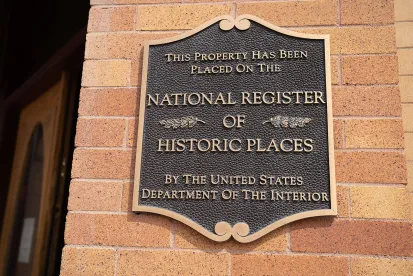There are seventy historic districts in Washington, D.C., with local neighborhoods accounting for more than thirty of these designated areas. In addition to working to preserve some of Washington’s oldest and most historic resources, the DC Historic Preservation Office (HPO) and local preservation organizations are evaluating the historic significance of the next generation of properties, those built in the 1960s and 1970s. Many of these buildings are the same properties real estate developers and investors are eyeing for redevelopment, either fully or through conversion of existing buildings, into mixed-use, residential or hospitality projects. These types of projects have the potential to significantly advance several urban planning goals related to housing, sustainability, economic development, and racial equity. However, it is important to take a step back and understand what it takes to successfully balance these important goals with equally important considerations related to historic preservation.
Redeveloping or adapting existing buildings for new uses is inherently complicated, and even more complicated when the building has historic significance. Once a property is designated for protection, a range of processes and restrictions are triggered. Property owners should pay attention to the nuances that apply to purchasing or renovating these types of assets. For instance, Washington, D.C. is home to many historic campus sites that require strategic, coordinated planning to meet preservation criteria across many buildings regardless of an individual building’s historic status. Removing a non-contributing building or reworking a current building within an historic district requires a sensitive approach to maintaining the character of the historic district the property lies within. In a nutshell, developers must pull together a resourceful, experienced team of professionals who understand how to update properties while working collaboratively with the various stakeholders. In Washington DC, this often involves working with a myriad of District and Federal regulatory bodies that establish the requirements and boundaries regarding redevelopment, and private preservation organizations that advocate for the protection of historic properties. As an approach, a proactive, creative, and collaborative mindset that aligns with District goals is needed.
Historic preservation designations change redevelopment efforts
Washington, D.C. is a hotbed for historic preservation, whether designating entire districts or preserving individual assets for their contributing value. It is important to know that historic landmark nominations can be filed at any time by community organizations with a stated preservation interest. And once the filing is made, an interim period is triggered, ceasing all work on the property while it is evaluated. This can be burdensome for real estate developers, investors and individual owners, but it also can present time for proactive planning. There are tremendous opportunities in preserving properties through responsible redevelopment. Linking the two efforts together can be powerful, helping all parties achieve a thriving place to live and work while preserving the character that makes the place special.
Undoubtably, there are real impacts to historic preservation for real estate developers and building owners in Washington, D.C. And perhaps the most foundational one is that historic preservation considerations can override the Zoning Regulations that are applicable to any designated building, or at least significantly impact the desired development program. What that boils down to is that when a building is designated, or is located within an historic district, the DC Historic Preservation Review Board has a significant role in what happens with that property. Ultimately, regardless of current Zoning Regulations, building conversions and redevelopment may be bound by more restrictive preservation requirements. For example, an addition to an historic building may be subject to height reductions and larger setbacks not otherwise required by zoning to minimize the visual impacts on the surrounding designated neighborhood.
Balancing competing interests for successful redevelopment
In addition to preserving our architectural and cultural history, there are numerous other pressing interests that demand significant consideration. In addition, a massive shift in how people use buildings post-pandemic continues to change the urban landscape. Competing interests have always existed in land use and real estate development. With fewer people using traditional office spaces, owners of commercial real estate assets are now evaluating whether conversion to residential is the highest and best use. In addition to potential historic considerations, other complicated issues are presenting even more challenges to building conversions, such as potential affordable housing requirements, high performance building standards (including rooftop solar), climate resilience measures, aging infrastructure, and the viability of ground-floor retail. Arguably, these are all critical components to successful urban planning regardless of historic status, and assembling the right professional team makes a huge difference in how projects are conceived and completed. It is more important than ever to be proactive and collaborative with applicable regulatory agencies, the affected community, and other interested stakeholders to ensure a smooth review process that can survive potential legal challenges. Harnessing professionals with the ability to transition between the big picture and granular details of a project, including conversions, will allow property owners to satisfy as many interests as possible under one project. It is a delicate balancing act that the Goulston & Storrs’ team has decades of experience handling. With secured, trusting relationships across the city, we use proactive conversations with stakeholders to understand what everyone wants to see happen, and then successfully find the best path to finance, design and build projects.
Conclusion
All of these points beg an important question for real estate developers and owners. How does a redevelopment project stay financially viable while meeting historic preservation requirements, and balancing several other competing planning interests? That could boil down to establishing the right team of advisors.
Jonathan Mellon also contributed to this article.




 />i
/>i

